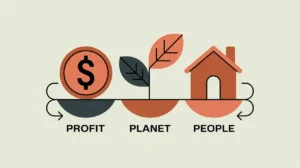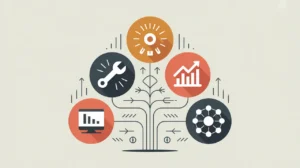Importance of OKRs (Objectives and Key Results)
OKRs help organizations translate strategy into actionable goals and measurable outcomes. They foster alignment by ensuring that everyone, from leadership to frontline staff, is working toward the same priorities. For nonprofits, social enterprises, and development agencies, OKRs matter because they create focus, encourage accountability, and make progress transparent, which is critical in resource-constrained environments where clarity of purpose drives impact.
Definition and Features
Objectives and Key Results is a goal-setting framework designed to link ambition with measurable performance. Its defining features include:
- Objectives – qualitative, inspiring, and time-bound goals that set direction.
- Key Results – specific, measurable, and verifiable outcomes that define success.
- Alignment – cascades objectives across teams and levels of an organization.
- Transparency – makes goals visible across the organization to build accountability.
- Agility – encourages short cycles (quarterly or annual) to adapt to change.
How this Works in Practice
In practice, an education nonprofit might set an objective to “Improve digital learning outcomes for rural students.” Key results could include “train 500 teachers in blended learning methods,” “increase student math scores by 15%,” and “deploy learning apps to 10,000 households.” Teams track progress regularly, and results are reviewed at the end of the cycle to inform future objectives. Challenges include setting overly ambitious or vague objectives, neglecting qualitative insights, and maintaining discipline in updating and reviewing OKRs.
Implications for Social Innovation
OKRs support social innovation by providing a structured method to align bold vision with tangible outcomes. They help innovators stay focused while experimenting, ensuring that short-term progress builds toward long-term impact. For funders and practitioners, OKRs offer a transparent way to track performance, foster accountability, and create learning loops. Properly implemented, they enable organizations to balance aspiration with execution, driving innovation from intent to measurable change.







